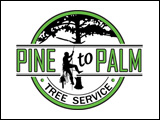Research conducted by the University of Saskatchewan shows populations of feral wild boar are now present in 110 of 296 of the province’s rural municipalities.
In the 1980s and 90s, as part of efforts to diversify agriculture, wild boar were brought on to the Canadian prairies, some escaped, others were purposely released and their populations have started to expand and disperse.
Dr. Ryan Brook, an assistant professor with the Indigenous Land Management Institute & the Department of Animal and Poultry Science at the University of Saskatchewan reports a survey conducted this past winter showed, of the 296 rural municipalities in Saskatchewan 110 have observed feral wild boar over the last three years.
Everywhere were there’s been invasive wild boar globally, and especially in the southern United States, they have a tremendous problem.
For example Texas, which is basically the exact same size as Saskatchewan, they have about three million wild boar right now and they have major problems across California, Texas and much of the southern U.S. now where the population have expended to the point now where most U.S. states have feral wild boar and they cause crop damage, a tremendous amounts of crop damage.
They get into native ecosystems and they eat everything from eggs of waterfowl to waterfowl themselves, destroy habitats.
Because they are a rooting species they get their nose underground and they dig.
A group of boar even in one night can do tremendous digging damage.
It looks like a rototiller went through a huge are of land and tore it up.
They can harass livestock and perhaps most importantly they’re known as host for a number of really important diseases that can affect humans, wildlife and livestock.
Dr. Brook suggests livestock, native ecosystems and crop production on the prairies are all at great risk from these wild boar.



